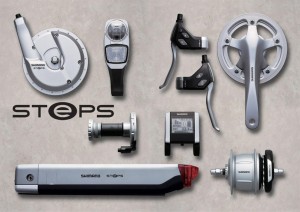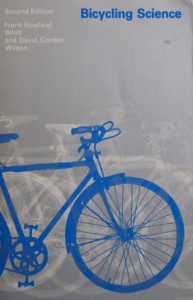Bỏ ra 7 năm trời để viết 7 cuốn đầu tiên của bộ sách 10 tập "Sáng tạo và đổi mới" (NXB Trẻ), PGS-TSKH Phan Dũng gợi mở một quá trình thay đổi tư duy và đưa ra quyết định đúng để mỗi người có thể giải quyết các vấn đề gặp phải trong đời.

Lý do mà tác giả viết sách chính là, trong cuộc đời, mỗi chúng ta dùng suy nghĩ rất nhiều. Ai cũng muốn mình suy nghĩ kỹ, nhưng phần lớn, mọi người đều suy nghĩ một cách tự nhiên mà ít khi nghĩ xem những suy nghĩ của mình hoạt động ra sao để cải tiến, làm cho suy nghĩ tích cực hơn. Chính vì thế mà có nghề suy nghĩ và hành động giải quyết các vấn đề.
Đó cũng là mục tiêu hướng tới của bộ môn Phương pháp luận sáng tạo và đổi mới (PPLSTĐM). Tác giả ví nó như “chiếc máy xúc” cho ra năng suất và hiệu quả cao hơn nhiều so với lối suy nghĩ tự nhiên (tương tự như dùng xẻng).
Ông cũng nhấn mạnh: “Nếu xem bộ não của mỗi người là máy tính tinh xảo, thì phần mềm (cách suy nghĩ tự nhiên) đi kèm với nó chỉ khai thác một phần rất nhỏ tiềm năng của bộ não. PPLSTĐM là phần mềm tiên tiến giúp máy tính - bộ não hoạt động tốt hơn nhiều. Chính vì lẽ đó, ngay từ những năm 1950, ở Mỹ và Liên Xô đã có những lớp học thử nghiệm về các phương pháp này”.
Bản thân tác giả - trong thời kỳ theo học ngành vật lý bán dẫn thực nghiệm tại Liên Xô - có may mắn học thêm khóa đầu tiên ở Học viện Công cộng về sáng tạo sáng chế, dưới sự hướng dẫn của GS Altshuller - nhà sáng chế, nhà văn viết truyện khoa học viễn tưởng và tác giả của Lý thuyết giải các bài toán sáng chế nổi tiếng (TRIZ). Khi về VN, ông trở thành người đầu tiên đưa bộ môn này vào VN và mở những khóa học về PPLSTĐM vào năm 1977, sau nhiều năm đã gây dựng cơ sở chính thức đầu tiên ở nước ta giảng dạy, đào tạo và nghiên cứu bộ môn trên.
Bộ sách gồm các cuốn sau: “Giới thiệu PPLSTĐM”, “Thế giới bên trong con người sáng tạo”, “Tư duy logic, biện chứng và hệ thống”, “Các thủ thuật (nguyên tắc) sáng tạo cơ bản” 1 và 2, “Các phương pháp sáng tạo”, “Các quy luật phát triển hệ thống”, “Hệ thống các chuẩn để giải các bài toán sáng chế”, “Algorit giải các bài toán sáng chế” và “PPLSTĐM: Những điều muốn nói thêm”.
Những cuốn sách trên trình bày khá chi tiết và hệ thống dựa theo giáo trình môn học dành cho người sử dụng PPLSTĐM, kèm theo những bài tập thực hành, những ứng dụng, những ví dụ cụ thể để người chưa đến lớp cũng nắm được khái niệm về môn học này, cũng như bổ sung nguồn tài liệu phong phú cho các học viên.
Tác giả nhấn mạnh: Ở thời đại bùng nổ thông tin này, nếu người có thông tin mà không thông qua phần xử lý ở bộ não để biến đổi thông tin trở nên có ý nghĩa và ích lợi cho họ, thì chính họ có thể bị “bội thực” thông tin nhưng “đói” tri thức, thậm chí “ngộ độc” vì nhiễu thông tin và “chết đuối” trong đại dương thông tin mà không khai thác được gì từ đại dương giàu có đó. PPLSTĐM chính là hệ thống công cụ dùng để biến đổi thông tin thành tri thức, tri thức đã biết thành tri thức mới.

Ông cũng hy vọng, qua bộ sách này, những người có trách nhiệm sẽ để tâm đến vấn đề nghiên cứu, giảng dạy PPLSTĐM hơn và không thể chậm trễ hơn nữa, đưa bộ môn này vào chương trình giáo dục của nước nhà.
GS-TSKH Phan Dũng sinh năm 1950 tại Thừa Thiên - Huế, tốt nghiệp đồng thời Đại học Tổng hợp quốc gia về vật lý thực nghiệm các chất bán dẫn và Học viện Công cộng sáng tạo - sáng chế Azerbaigian, Baku, Liên Xô năm 1973. Nhận học vị tiến sĩ (1985) và TSKH (1989) về vật lý thực nghiệm các chất bán dẫn tại ĐH Quốc gia Leningrad (nay là Saint Petersburg) - Liên bang Nga, nhận chức danh phó giáo sư năm 1991. Ông là người sáng lập và hiện nay là Giám đốc TT Sáng tạo khoa học kỹ thuật (TSK) thuộc Trường ĐHKH tự nhiên, ĐHQG TPHCM.






















